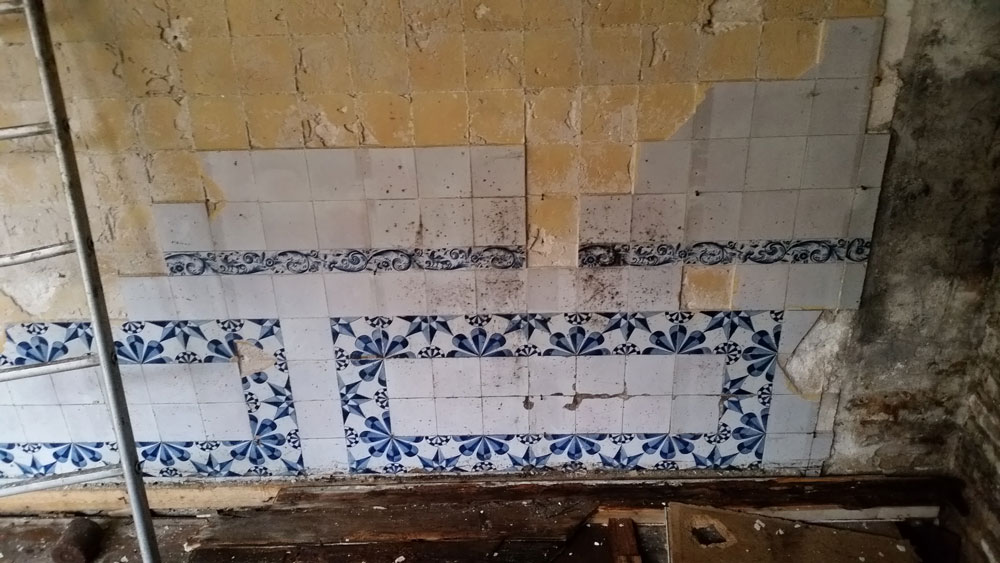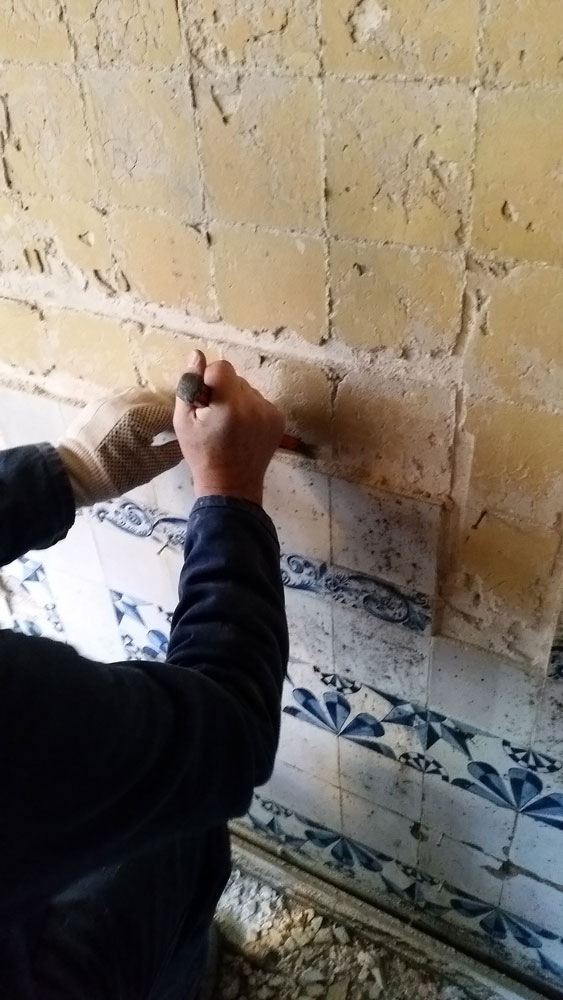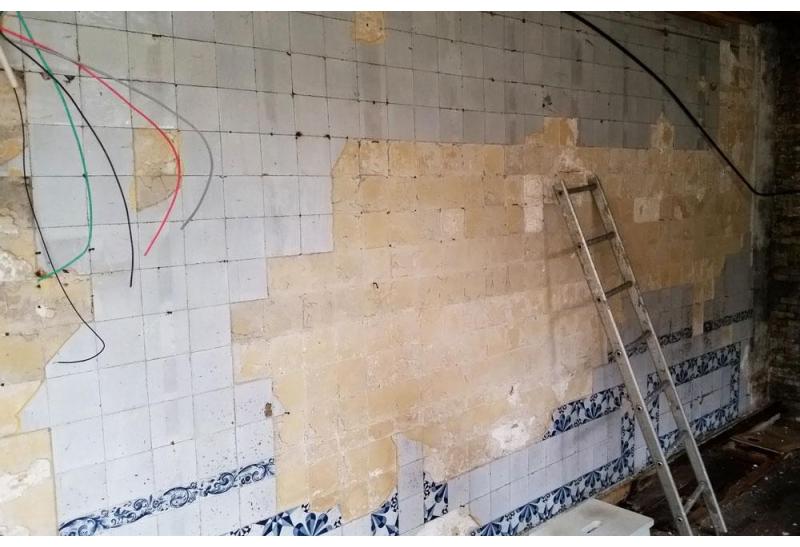Although over 800 million tiles were made between 1600 and 1900 in the Netherlands, finding original antique Dutch Delft tiles is in 2016 quite a challenge. Sure, after 45 years we have been to all the fairs and met all the collectors, so we know where to go if we are looking for a true collectible. But finding enough tiles to decorate a bathroom, hallway or a kitchen with, is a completely different hunt.
The sixties = modern home makeover
Back in the 60’s, many houses built before 1900 had tiles in place. Most of the time just around their fireplace, but sometimes entire rooms were decorated with the most beautiful tiles and murals. Unfortunately, many people were not aware of the historical value that was mounted onto their walls and as soon as the Dutch became wealthier they wanted to give their homes a modern makeover. A bit too often, they took some hammers and smashed them all out. Some homeowners were more gentle, but since the production of the famous Dutch Delft tiles started, many of the millions of tiles nevertheless got lost during the past centuries by fires, hammers, wars and overall neglect.
Most of the time, when we buy antique Dutch tiles such as the plain white ones, we buy them in small numbers. Sometimes just a few, sometimes 50 and if we are lucky we are able to buy a few hundred at once. In general we lose around 30 to 50 % of the tiles in the sortation process as they are too damaged. We hardly ever find tiles that are still in place at their original wall, but on rare occasions, we are lucky. And just a few weeks ago, we were lucky!
A hidden original 18th century wall with Dutch Delft tiles

Somewhat by coincidence we stumbled upon a homeowner working on a recently purchased building. The building itself was in a terrible condition, so we might as well call it a ruin. The man showed us the house, dating back from the 17th century, and told us he found the remains of an 18th century outhouse in the backyard. The outhouse was probably meant for guests, but might as well have been the home for employees that worked for the wealthy owner of the front house.
Once arriving in the backyard, we did indeed find a few remaining walls of what had once been an 18th century building. Although the weather was bad and it all looked tremendously saddening, we were at the same time welcomed by the sight of a few hundred original 18th century tiles, still in place after at least 250 years! The wall had taken quite some damage and 50 % of the tiles that used to be there were already lost. Nevertheless it was an extremely rare find, that was only found after the construction workers removed wooden panels that covered the entire wall.
Whenever we find an original wall with tiles in place in a good or restorable condition, we always advise the owners to keep it intact. Once removed, it can be rebuilt but it will never be the original wall with all its historical value. In this specific case, these tiles had to be removed as soon as possible. The walls were in a terrible condition and exposed to open air. Frost and water would be able to damage the tiles in just a matter of weeks and basically make them lost forever.
Removing antique tiles from a wall; a fragile process
 Removing antique Dutch Delft tiles from a wall is a real craft. They are extremely fragile when not removed properly. We use knockers on the tiles to literally listen to the way they are attached. Knocking on the tiles in the right way, will tell you which tile is attached firmly and which one is rather loose. We are able to distinguish the different levels of ‘attachment’ between all four corners of one single tile. This skill is required, as three loose corners will still make the fourth one break when not made loose before taking it out.
Removing antique Dutch Delft tiles from a wall is a real craft. They are extremely fragile when not removed properly. We use knockers on the tiles to literally listen to the way they are attached. Knocking on the tiles in the right way, will tell you which tile is attached firmly and which one is rather loose. We are able to distinguish the different levels of ‘attachment’ between all four corners of one single tile. This skill is required, as three loose corners will still make the fourth one break when not made loose before taking it out.
After at least four or five tiles in a row have been made loose, by clearing them and creating pressure from the sides by the use of a chisel, an attempt can be made to take them out in one piece.
It took us quite some time to clear this wall and although some tiles broke, we managed to save the most of them. It will probably take another four of five weeks of cleaning before they are ready to be used again!
A lot of work, but the satisfaction it brings is a great reward!

 10 out of 10
10 out of 10





